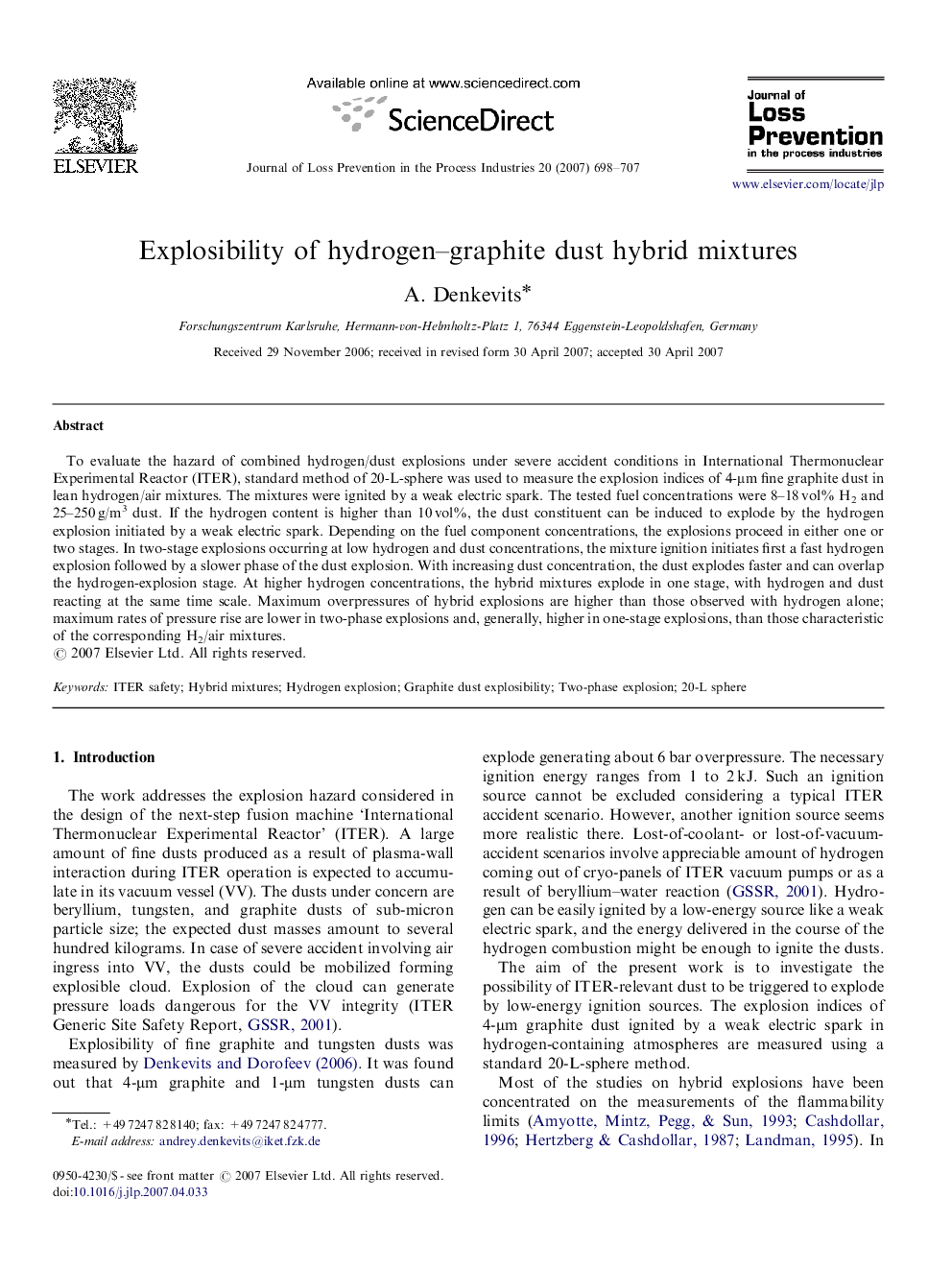| Article ID | Journal | Published Year | Pages | File Type |
|---|---|---|---|---|
| 586674 | Journal of Loss Prevention in the Process Industries | 2007 | 10 Pages |
To evaluate the hazard of combined hydrogen/dust explosions under severe accident conditions in International Thermonuclear Experimental Reactor (ITER), standard method of 20-L-sphere was used to measure the explosion indices of 4-μm fine graphite dust in lean hydrogen/air mixtures. The mixtures were ignited by a weak electric spark. The tested fuel concentrations were 8–18 vol% H2 and 25–250 g/m3 dust. If the hydrogen content is higher than 10 vol%, the dust constituent can be induced to explode by the hydrogen explosion initiated by a weak electric spark. Depending on the fuel component concentrations, the explosions proceed in either one or two stages. In two-stage explosions occurring at low hydrogen and dust concentrations, the mixture ignition initiates first a fast hydrogen explosion followed by a slower phase of the dust explosion. With increasing dust concentration, the dust explodes faster and can overlap the hydrogen-explosion stage. At higher hydrogen concentrations, the hybrid mixtures explode in one stage, with hydrogen and dust reacting at the same time scale. Maximum overpressures of hybrid explosions are higher than those observed with hydrogen alone; maximum rates of pressure rise are lower in two-phase explosions and, generally, higher in one-stage explosions, than those characteristic of the corresponding H2/air mixtures.
